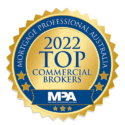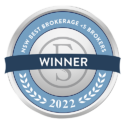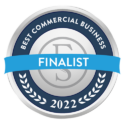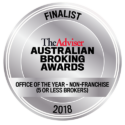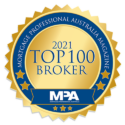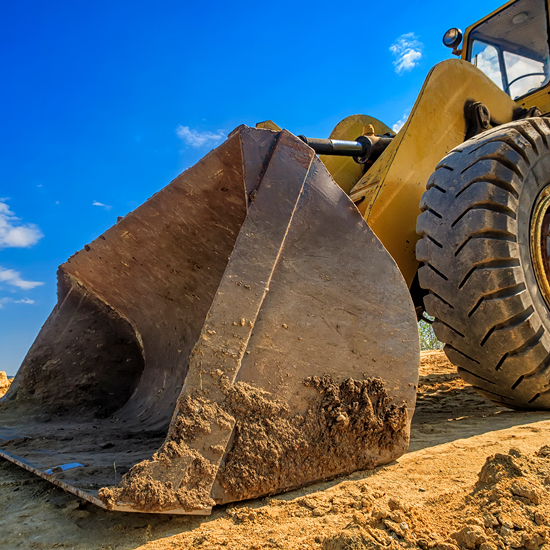How does equipment finance work?
Equipment finance gives your business access to the equipment it needs without having to outlay a large sum of money upfront to purchase it outright. Avoiding a large capital expenditure means your business can use that money for a higher-value purpose in running or expanding its operations.
The way equipment finance works will depend on the type of equipment finance product. There are a variety of equipment finance products including leasing, hire purchase and chattel mortgages. The main differences are around the ownership of the asset, who is responsible for repairs and maintenance, and how depreciation and payments are treated from an accounting and taxation perspective.
Your accountant is usually the best person to speak to regarding which equipment finance
structure best suits your business.
What equipment can be financed?
There are lenders and products for almost any type of equipment. Some lenders offer finance over a broad range of equipment where other lenders are niche and can specialise in only one or two types of equipment.
Types of equipment that can be financed include:
Mining, agricultural and earthworks
- Excavators, graders, loaders, and bulldozers
- Earth movers, mining, and dump trucks
- Cranes
- Tunnelling equipment and continuous miners
- Underground transport vehicles
- Conveyor belts and crushers
- Tractors and combine harvesters
- Plows and cultivators
- Large scale irrigation equipment
- Horse treadmills
Heavy and factory equipment
- Forklifts
- Scissor lifts
- Specialist factory equipment
- Manufacturing equipment
- Plant and processing machinery
- Material handling equipment
- Industrial printers
- Laser cutters
- Racking and shelving
- Factory fitout
Medical equipment
- X-Ray machines
- MRI, ultrasound, and CT scanning equipment.
- Dental chairs
- Lifters and beds
IT, computers, and electrical
- Phone systems
- Computer hardware and printers
- IT infrastructure such as servers and external data storage devices
- Televisions and other larger electrical items
- Copiers and scanners
Gym equipment
- Weighted strength training and powerlifting equipment
- Cardio machines and cross trainers
- Treadmills and exercise bikes
- Rowing machines and stair climbers
- Free weights, dumbbells, barbells, and kettlebells
Commercial kitchen appliances
- Ovens, fryers, stoves, grills/griddles
- Microwaves
- Fridges, freezers, and cold storage
- Rangehoods and ventilation
- Dishwashers and glasswashers
- Baking and pizza ovens
- Benches, sinks, and shelving
What are the different types of equipment finance?
There are a variety of options when it comes to financing equipment, and you should always seek professional advice in relation to the best option for your business and it’s needs.
Below are some of the most common types of equipment finance, including the pros and cons of each.
Finance lease
The terms finance lease and asset lease are used interchangeably. A finance lease exists where the ownership of the asset is held by the lessor (finance company) and is permitted for use by the lessee (borrower) for a set monthly fee. At the end of the lease term the asset ownership transfers to the lessee (borrower). This may or may not involve a final residual payment paid to the lessor (finance company). During the lease term, the lessor would claim depreciation on the asset, and the lessee would claim the leasing expense as a tax deduction.
Pros:
- Off balance sheet finance
- Lease expense is tax deductible
- Can include residual payment to reduce monthly outgoings
- You own the asset at the end of the lease
Cons
- Unable to claim depreciation on the equipment while lease is active
- Care and maintenance costs may be the responsibility of the lessee
- Risk of obsolescence of the equipment is carried by the lessee
- You do not own the asset during the lease term
Asset lease
The terms asset lease and finance lease are used interchangeably. Refer to Finance lease above.
Operating lease
An operating lease is like an asset or finance lease, with the exception that there is no transfer of ownership from the lessor to the lessee at the end of the agreement, maintenance of the equipment is usually the lessor’s responsibility, and the risk of obsolescence is carried by the lessor. The lease agreement would outline the responsibilities of each party, how the asset is to be maintained (and who is responsible for what expenses), and any options to upgrade obsolete equipment. As the owner of the asset or equipment, the lessor would claim depreciation on the asset and the lessee would claim the leasing expense as a tax deduction.
Pros:
- Off balance sheet finance
- Lease expense is tax deductible
- Cost of maintenance is lessors’ responsibility
- Options to upgrade if equipment becomes obsolete
Cons:
- Asset ownership not transferred at end of lease
- Unable to claim depreciation on the equipment
- Cost is usually greater to reflect maintenance by the lessor and potential obsolescence
- You do not own the asset
Commercial hire purchase
This is when the lender purchases the asset or equipment and then hires the item to you for a fixed repayment (usually monthly) over a fixed period. There may or may not be a final residual or balloon payment. Once the final payment has been made the customer takes ownership of the asset or equipment. Commercial hire purchase is available when the asset is wholly or predominantly for business use.
Pros:
- Asset ownership transferred to hirer after final instalment
- Option to repay loan and take ownership early
- Hirer receives interest expense and depreciation benefit for tax purposes
- Fixed repayment amounts and may have an option for a residual payment to reduce monthly cost
Cons:
- Owner/vendor may repossess the equipment if repayments are missed
- Payment defaults may impact your credit score
- Responsibility for repairs and maintenance falls on the hirer
Chattel mortgage
Chattel mortgages are a financial product where the asset or equipment is owned by the borrower and is taken as security for the loan by the finance provider. The borrower, as the owner, is fully responsible for the registration, insurance, maintenance, and running costs of the asset. The financial interest of the finance provider in the item is registered on the Federal Government Personal Property Securities Register (PPRS) until the loan has been repaid in full. A chattel mortgage is available where the use of the asset or equipment is wholly or predominantly for business use.
Pros:
- Equipment is owned by the borrower from the start, meaning you may be able to claim any GST on the purchase
- Lower interest rates
- Can claim depreciation and interest expenses as it is considered a business asset (on balance sheet)
- Flexible terms including loan duration and residual/balloon payments
Cons:
- The loan is secured against the equipment and may be repossessed and sold if repayments are missed, with the borrower still due for any remaining balance
- Payment defaults may impact your credit score
- Cost and responsibility of repairs and maintenance falls on the borrower
- Risk of obsolescence of the equipment is on the borrower as the owner of the asset
What are the benefits of commercial equipment finance for my business?
The benefits of commercial finance for your business can include:
- Retain business capital. Commercial finance gives you the ability to access the equipment your business needs for a monthly repayment, rather than outlaying the larger capital required to purchase the equipment. Your business may not have the required capital to spend, or you may be able to better utilise those funds to further business growth and expansion.
- Ability to borrow off balance sheet. In the case of leases, there is no asset or liability shown on the company balance sheet as there is no loan and ownership is with the lessor. This can help your business more easily borrow funds in the future, if required.
- Manage obsolescence risk. In the case of operating leases, your business will not take on ownership of equipment which may be outdated at the end of the lease. Some operating leases will allow you to upgrade to newer equipment which becomes available.
- Manage repair and maintenance costs. With operating leases, the cost of repairs and maintenance will be the responsibility of the lessor, giving your business certainty and saving you money on any costly or unexpected maintenance and repairs.
- Tax benefits. In the case of chattel mortgages and commercial hire purchases, you can claim the depreciation and interest expenses for your business to reduce your tax expense. If you have a lease, you can claim the entire payment as a business expense.
